#Incan mythology
Text
Sun Deity Meeting, who are the members?

#apollo#greek mythology#helios#ra#egyptian#mythologies#hittites#Incan mythology#Inti#sun gods#sun goddesses#sun deities#amaterasu#japan mythology#sól#norse deities#norse gods#norse mythology#chinese mythology#Xi he#arinna
84 notes
·
View notes
Text
#polls#mythology#chinese mythology#philippine mythology#incan mythology#greek mythology#polynesian mythology#dinka mythology#slavic mythology#sami mythology
27 notes
·
View notes
Text
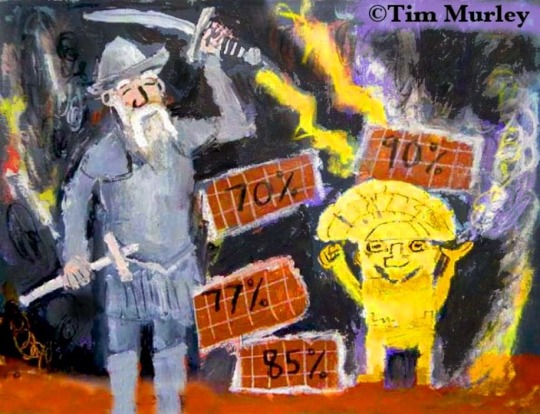
Conquest of chocolate. 🍫🥇(mixed media collage on canvas)🎨
#spanish history#Spain#cordoba#Sevilla#madrid#conqueror#conquest#conquistadores#conquistadors#conquistador#Aztec#incan mythology#dark choco cookie#dark chocolate#chocolate#hot chocolate#chocolate cake#cocoa things#cocoart#cocoa cookie#cocoa beans#cocoa butter#chocolates#Godiva#pop art#naive art#outsider art#basquiat#jean michel basquiat#keith haring
1 note
·
View note
Text
inti is an alcoholic
0 notes
Text
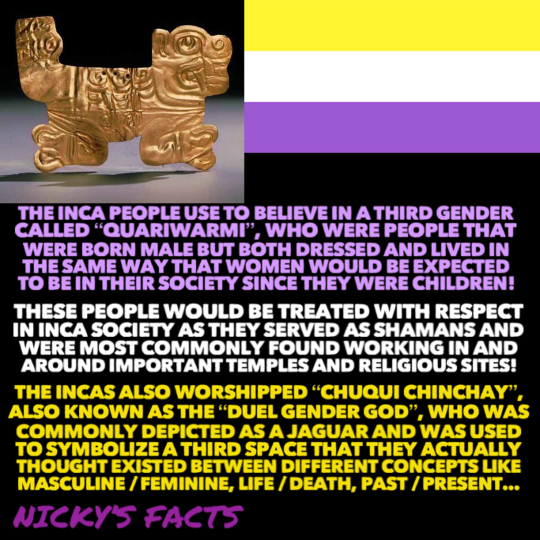
All hail Chuqui Chinchay! the jaguar god of non-binary people!
🏳️🌈🐆
#history#quariwarmi#chuqui chinchay#lgbt#inca#indigenous history#third gender#peru#mythology#native american#incan history#lgbt history#dual gendered god#gender#jaguar#inca society#incan empire#indigenous americans#peruvian history#myth#shaman#inca god#non binary#indigenous people#religious leaders#third gender history#nickys facts
36 notes
·
View notes
Text
Mythology Crossover Series!!!
So hear me out here: What if there was this series with all the pantheons overlapping, but (and here's the catch): It's hilarious shit but also the most historically accurate thing ever. Like no gender-benders (unless the god/goddess has a female/male alias), no secretive events sandwiched in between the historical events and the series pilot, nothing like that. But here's the plot twist: None of the gods know the other gods exist, and think they're just meeting with super fucking delusional mortals.
The only people aware of the existence of all the other pantheons are two people: Loki and Tezcatlipoca.
Chaos ensues.
#Greek and Roman and Egyptian and Norse and Hindu and Celtic and Mesopotamian mythology#And Mayan/Incan/Zapotec/Aztec/Dine/Chinese/Japanese/Korean/Filipino#Mythology crossover anyone#Quetzalcoatl Thoth and Athena met at a book convention and I will die on this hill#Loki#Tezcatlipoca#Both are going to be trolling so hard#If anyone knows how to make this#Take my fucking money#absolutely NOT fate#no whitewashing#I'm going to be honest with y'all I was super unsatisfied by fate's character designs#Thanks for coming to my TED talk#mythology crossover
3 notes
·
View notes
Text


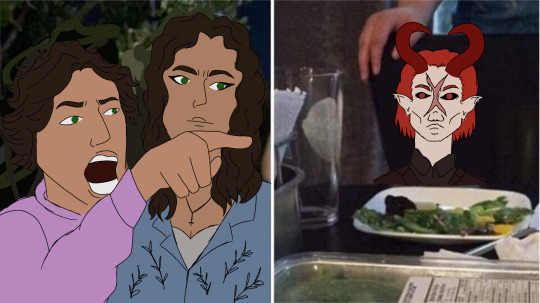

this is Very Fun :))
#oc art#oc artwork#original character#my ocs#i found out after naming the siblings anningan and malina that there’s incest in their mythology…#but like… they have sun and moon energy… and theyre incan…#malina has face tattoos in more recent drafts#sub demon…#i’m sorry…
0 notes
Text
Because I feel like it.

Yellow sky? Bare footed characters? Mostly a mess? Over exaggerating some of the Hispanic features. I saw the first episode, and it was just poorly written in general. And what mother calls their son "cochinada." Roughly translates to dirty or trash.
What's good Latino/Hispanic representation?
Colombian 🇨🇴
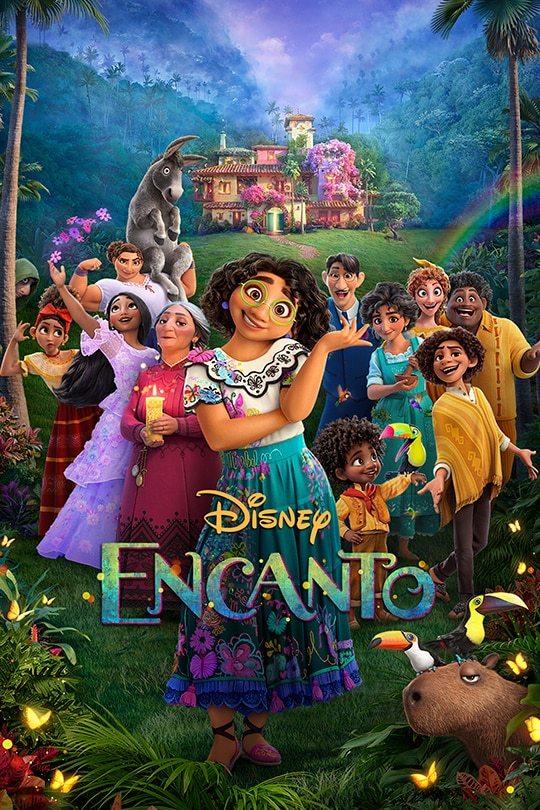
In the Caribbean region of Colombia, they light up candles and lanterns on December 8, before sunrise. So the candle giving them magic was a wonderful detail. Generational trauma is a thing for us Latinos, and this film handled it in a healthy and matuer manner. And I love how they didn't shy away with how Spaniards attacked and colonized latin lands.
Mexicans 🇲🇽
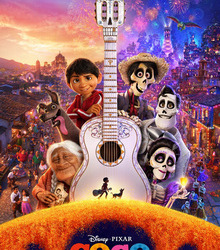

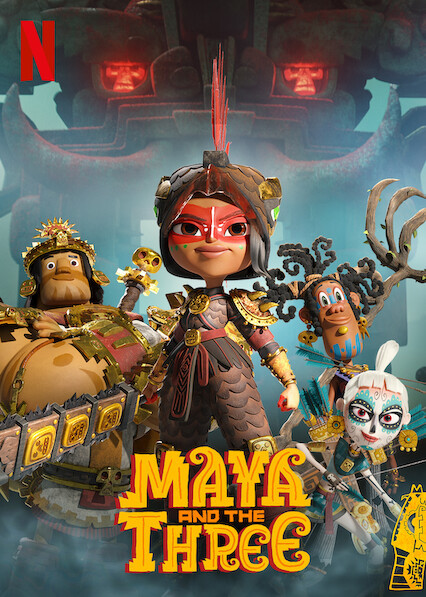
Yes, us Mexicans love death. 🤣 But hey, I was always taught to respect death, La Muerte, and our ancestors. So, it makes sense that many Mexican films talk about death. But I also like that Maya and the Three have Aztec, Mayan, and Incan mythology. Natives to Mexico.
Dominican Puerto Rican 🇩🇴🇵🇷
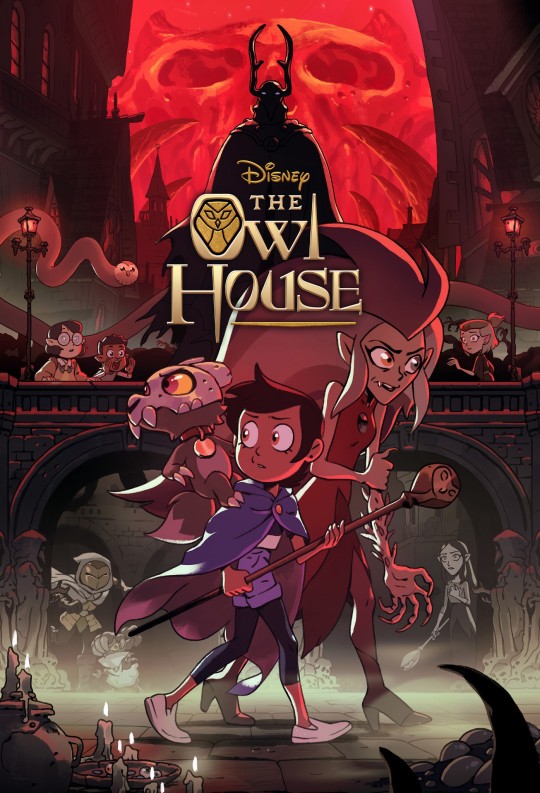
Luz mom is Dominican, and Luz dad is Puerto Rican. I appreciate a good interracial couple and a mixed child. Luz name also translates to light, and some Latinos are known for doing witch craft. Or at least knowledgeable about witches and demons, and no, we aren't evil. We just know how to handle this stuff. Plus, the owl has many meanings in Latino culture. To some, I believe the owl is a messenger of death and is telling everyone that death/danger is near.
Afro Latino. Puerto Rican 🇵🇷

I am a massive sucker for interracial couples and mixed kids because of this. I was working at a hispanic store as a cashier. This woman walks past me and starts talking to the bagger. The bagger has blond hair, blue eyes, and white skin. The bagger looks at me worried because she doesn't speak English. So brown skin, black hair, me has to tell the bagger that the lady wanted ice in Spanish. I then talked to the lady in English. Her reaction? "YOU SPEAK ENGLISH!" Same for a dark skinned man. So many people skip me and talk to him in English. He's Dominican, and he only spoke Spanish. I appreciate films that show Latinos in different skin types and features. We're not all brown. So yeah, the mass diversity in this film is just beautiful. And I love how they wrote Miles relationship with his parents. Realistic conflict and healthy communication. Not falling into toxic stereotypes.
Spainard Puss 🇪🇸 Mexican Kitty & Perrito 🇲🇽
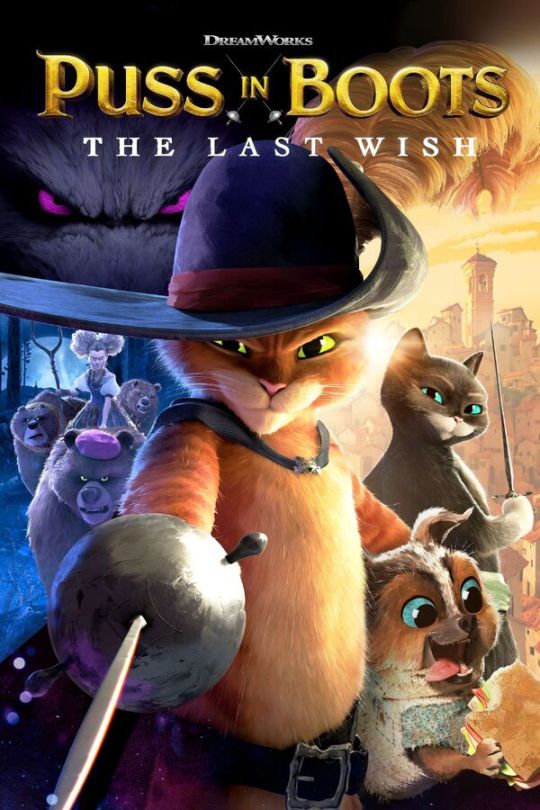
Spaniards are considered Hispanic but not Latinos like Mexicans. And again, interracial couples for the win. And I love the realism in their romance that heals through healthy therapy. Many people see Mexicans as toxic, so having Perrito as a therapist and the one helping everyone emotionally, it's nice. Not every Mexican is toxic. And I love how you can tell their Spanish and Mexican even though their animals. Puss Spanish accent, Spanish actor, him being a ginger like some Spaniards, flamingo dancing, and gazpacho. Kitty, Mexican accent, Mexican actress, black fur/hair like most Mexicans, quinceañera, and I love how they gave her a luchador mask. Something that originates from Mexico. Also, my brother and I joke how we as Mexiacns can't swim and Kitty nearky drowns in the 1st film. 🤣 Perrito, he's a chihuahua with a Mexican actor. Enough said. I also want to say death is Brazilian because of his actor.
I don't know much about Spanish culture, but someone said the wishing star has a connection to Spanish culture. Is that true? If so, COOL! Because death is connected to Mexican culture. So, Dreamworks finding a way to combine Spanish and Mexican culture in one film is 100% magical.
There are many more, like Beverly Hills Chihuahua 🇲🇽. 🤣 That film is better than Primos. Emperor's New Groove, Peru 🇵🇪, and Rio, Brazil 🇧🇷. Not Hispanic but Latino culture. But this post is getting long. Primos! A huge step down in Latino/Hispanic representation. Especially since we have so many good films and shows that have proper representation.
#primos#encanto#maya and the three#maya and the 3#coco#book of life#the owl house#toh#owl house#puss in boots#puss in boots the last wish#spiderman across the spiderverse#spider man: into the spider verse#into the spider verse#spiderman: into the spiderverse#spiderman into the spiderverse#spiderman#spider man across the spider verse#across the spiderverse
381 notes
·
View notes
Text
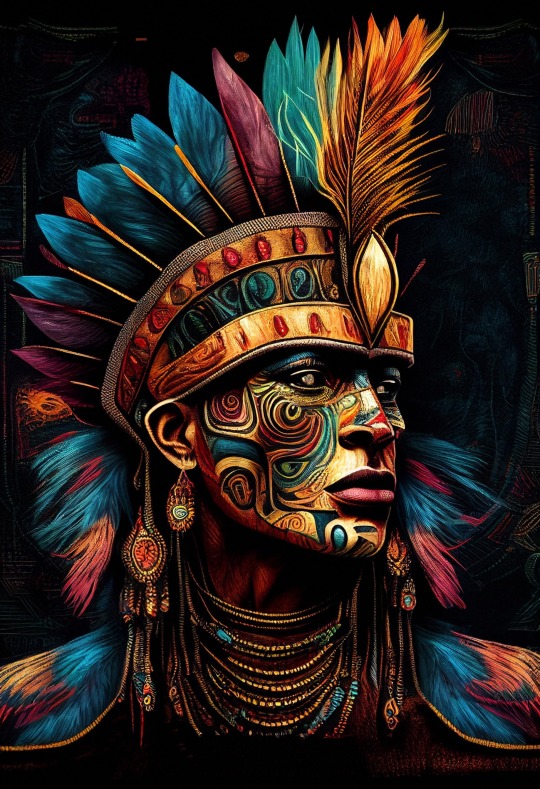
Viracocha: The Great Creator God of the Incas
Talon abraxas
THE LEGEND OF VIRACOCHA
Legend tells us that a primordial Viracocha emerged out Lake Titicaca, one of the most beautiful and spiritually bodies of water in the world and located next to Tiwanaku, the epicenter of ancient pre-Hispanic South American culture, believed location of spiritual secrets found in the Andes. Viracocha is intimately connected with the ocean and all water and with the creation of two races of people; a race of giants who were eventually destroyed by their creator, with some being turned into enormous stones believed to still be present at Tiwanaku.
He re-emerged from Lake Titicaca to create the race most associated with humans as we understand them today. Satisfied with his efforts, Viracocha embarked on an odyssey to spread his form of gospel — civilization, from the arts to agriculture, to language, the aspects of humanity that are shared across cultures and beliefs.
While written language was not part of the Incan culture, the rich oral and non-linguistic modes of record-keeping sustained the mythology surrounding Viracocha as the supreme creator of all things. Now much-visited ruins, the distinct structures, and monoliths, including the architecturally stunning Gateway of the Sun, are testimony to the powerful civilization that reached its peak between 500-900 AD, and which deeply influenced the Incan culture.
17 notes
·
View notes
Text
Urcuchillay -The Incan Rainbow Llama

You ever seen the Disney movie 'The Emperor's New Groove'? Turns out, it's actually a relatively faithful representation of the Ancient Incan Empire, give or take some Cartoon Hijinks. But you ever thought it was hilariously random the title character was turned into a Llama? Well it turns out, llamas were a very important part of the day to day Incas.
Llamas were where most Inca people got their materials for clothing, as llama (and alpaca) wool is warm and durable. They also ate llamas when needed, and llamas were able to traverse the high cliffs while carrying some cargo. Remember, there were no horses. And though the llama was not strong enough to carry a person or pull a cart, their help was still greatly appreciated.
The god Urcuchillay was a multicolored llama who could control the weather. It was mainly worshiped by farmers since weather would be important to growing crops. If they had log periods of time of bad weather, the Incas would sacrifice llamas to Urcuchillay with hopes to appease them. So knowing this, the fact that Urcuchillay was like a commoner God, makes it all the more funny the self centered emperor was turned into a Llama.
The Story of Urcuchillay
According to Inca mythology, Urcuchillay was considered a benevolent god associated with fertility, agriculture, and the cycles of nature. The Incas believed that Urcuchillay played a role in bringing rain, which was essential for the prosperity of their crops in the Andean highlands.
The story of Urcuchillay is not as extensively documented as some other Inca myths, but it is often recounted in the context of the larger Inca pantheon and their cosmological beliefs. Here is a fictionalized retelling based on the available information:
Long ago, in the high reaches of the Andes, where the air is thin and the mountains touch the sky, there lived a powerful and benevolent god named Urcuchillay. His domain was the realm of rainbows, and his presence brought color and life to the world below.
Urcuchillay was often depicted as a magnificent, llama creature with a body that shimmered in all the hues of the rainbow. His movements were said to be graceful, like the dance of sunlight on raindrops, as he glided through the celestial skies.
The people of the Inca Empire revered Urcuchillay as a deity of fertility and agriculture. They believed that his influence brought forth the rains that nurtured the fertile soil, ensuring bountiful harvests and the prosperity of their communities.
Legend has it that Urcuchillay would emerge after a refreshing rain, his colors vivid against the backdrop of the clear, post-storm sky. Farmers would offer thanks to him, believing that his presence signaled a promise of abundance for the season ahead.
In the heart of the Andean villages, priests conducted rituals to honor Urcuchillay. These ceremonies were vibrant with colors, mirroring the hues of the rainbow god. The Incas believed that by appeasing Urcuchillay, they ensured the continued harmony between the natural world and their agricultural endeavors.
As the seasons turned and the agricultural cycles progressed, Urcuchillay's influence was evident in the flourishing crops that covered the terraced landscapes. The people of the Inca Empire saw his benevolence in the rainbow that arched across the sky, a celestial bridge connecting the heavens to the earth.
While the specific details of Urcuchillay's stories may vary, his role as a symbol of fertility, agriculture, and the life-sustaining rains remains a central aspect of Inca mythology. The reverence for Urcuchillay reflected the deep connection between the Inca people and the natural forces that shaped their lives in the highlands of the Andes.
#Inca#Andes#food and folklore#Llama#folklore#mythology#south america#rainbow#Urcuchillay#alpaca#fairytale#folktale#witch#klickwitch#the emperors new groove
14 notes
·
View notes
Text
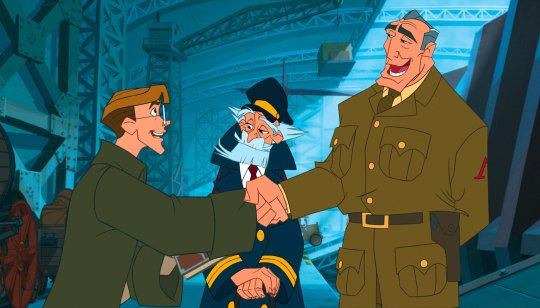
Long post warning, because I should use them more often:
I've been kinda buried, typical of me when it comes to the seemingly-biweekly hyperfixation, in the early 2000s Disney animated movies. Namely the pre-CHICKEN LITTLE movie, prior to the studio's switch to a future in CG movies. (With the encore of pair of PRINCESS AND THE FROG and the 2011 WINNIE THE POOH along the way.)
And I noticed, a lot of them, including a few non-Disney animated films from the period, have an almost deliberate "old-fashioned" bent to them. Now, Disney was never a stranger to period pieces when it came to animated features. Outside of the fairy tale and fantasy films set in dream-like worlds, places that exist in irrealities inspired by the real world and their respective source materials, you had more than enough films set in actual identifiable real-world places in past time periods.
For example, before going to straight-up dream worlds, ALICE IN WONDERLAND and PETER PAN from the early 1950s are clearly set in England. The former, Victorian-era England, the latter Edwardian. LADY AND THE TRAMP is somewhere in the Midwest, turn of the 20th century. It's in a state where the Baltimore & Ohio Railroad ran through, for sure, as you can see a logo for it on a train car in the film. (Sidenote/tangent: The direct-to-video sequel, SCAMP'S ADVENTURE, seems to suggest that the town Lady and Tramp live in is actually in New England... But the B&O Railroad does not run through any New England region state. The furthest to the East it goes is New York state. It's possible that the writers saw Jim Dear nailing a Yale flag to the wall in the original movie, and assumed it was set in Connecticut. And the DTV movies are an EU sort-of situation when it comes to these movies.)
So those are three 1950s examples, you also had THE ARISTOCATS being explicitly set in 1910 Paris, THE FOX AND THE HOUND appears to be set down South right around that time. '90s Disney had plenty, too: BEAUTY AND THE BEAST, POCAHONTAS, THE HUNCHBACK OF NOTRE DAME, MULAN, TARZAN, to name a few. HERCULES goes to ancient Greece and mythology, ALADDIN is set in a fictional Arabian city, that one I feel is more on the dream-world level of - say - SNOW WHITE or LITTLE MERMAID, where the setting/time period isn't quite written out. This is why I don't tie myself in knots trying to determine where and when THE LITTLE MERMAID takes place. It's literally an amalgamation of different European and tropical locations, inspired by a story by a Danish author, and it has a Caribbean crab in it.
But no, early 2000s Disney is more specific than not! DINOSAUR is obvious, THE EMPEROR'S NEW GROOVE is set in ancient South America (its Incan Empire setting originally had much more bearing on the story back when it was KINGDOM OF THE SUN, the movie that had gotten thrown out that this replaced), ATLANTIS: THE LOST EMPIRE takes place in 1914 - starting in Washington D.C. and then largely being set below the Earth thereafter, LILO & STITCH is present-day Hawaii, BROTHER BEAR is a post-ice age Pacific Northwest, and HOME ON THE RANGE is clearly set in Malaysia in 2177 A.D.
All joking aside, it's almost a string of movies like that... Except TREASURE PLANET, which is set in a fictional galaxy, full of fictional planets, and no sign of Earth, much like the STAR WARS universe. Yet, TREASURE PLANET's cosmic setting is 1800s pirates/high seas aesthetic meets spaceships and high-tech. After all, it *is* Robert Louis Stevenson's TREASURE ISLAND, a story dating back to 1881 as a serialized adventure before it was made into a complete novel two years later. Just take out 1800s Europe.
Now, at one point, the 2004 release of HOME ON THE RANGE was going to be followed by a movie called A FEW GOOD GHOSTS, which was once known as MY PEOPLES. This project went through several title changes over time... A 2D/CG hybrid that was a magical Appalachian love story involving ghosts that was to be set in the 1940s. The movie would’ve probably been released in the summer of 2005 if all had gone well, as it was to go full-steam ahead by the time of its cancellation in November 2003. By that point in time, Disney execs had long made up their minds about 2D animation, and because this was to be made by the Florida unit… Well, BROTHER BEAR didn’t meet expectations at the box office out of the gate… No more Florida unit, no GOOD GHOSTS…
What a lot of these movies have in common is that they, as mentioned earlier, are seemingly much more old-school than the animated movies of the '90s *and* their CGI contemporaries.
The majority of these movies were released during the years when a new CGI movie was - 99% of the time - pretty much an audience hit by default (SHARK TALE and CHICKEN LITTLE individually outgrossed LILO & STITCH, for example), and that definitely hurt the perception of hand-drawn 2D animated feature films. It's been written over and over, so much theorizing as to why the majority of these movies failed to connect with audiences the way the newest Pixar or DreamWorks CGI film did... And sometimes, I look at some of this cluster of movies and I can only notice how weirdly out-of-time they are… Either too late to the party, or there well before it's even planned. Like, years in advance.
As such, most of these movies became cult favorites of the few people who did see them back when they first came out or when they debuted on home video. These fans are all in their 20s now, at the highest. Yesterday's flops, today's "what? This movie SLAPS! How did it lose money at the box office?”
The majority of the CGI movies made in the late '90s/early '00s are thoroughly modern in some way or another. If it's not the setting, then it's the attitude. SHREK, for example, is set in a mishmash ye olden dayes fairy tales & nursery rhymes Europe (the first PUSS IN BOOTS movie further confirms this, being explicitly set in Spain), but everything else about it is as late '90s/early '00s as you can get. ICE AGE… Literally in the title, yet the comedy and writing rings more Looney Tunes and modern humor. I was turning 10 when ICE AGE came out, so I was aware of what the sorta-kinda general attitude was circa early 2002. The humor in the movie matched that; it was cool for an adult in their 20s to check out the talking prehistoric animals cartoon and quote it.
Pixar is kind of out of the question, well, this particular early run of Pixar movies. The TOY STORY movies, A BUG'S LIFE, and FINDING NEMO all clearly take place in the present. Timeless present-day settings, where it's modern enough but not too much to date the movie in question. (How 'bout that line in BUG'S LIFE about "the twig of '93"?) MONSTERS, INC. is set in a fantasy world, but that too is modern day, what with the cars and technology and every other detail. Boo doesn't walk in out a 1930s human world, haha.
When it comes to pre-2005/06 Pixar, the one exception in this criteria is THE INCREDIBLES, which is set in a retro-futuristic 1960s whose technological advances are informed by the presence of superheroes in that world. And yet, it's not a movie that feels out of time, old-timey, dated. It uses the '60s influences to enhance, rather than trap the storytelling. It’s also curiously not set in any specific American location - much like TOY STORY 1 & 2, and A BUG’S LIFE. In comic book tradition, it’s set in the fictional Municiberg, which I can only surmise is somewhere on the West Coast. CARS and RATATOUILLE and UP, afterwards, would go back to present-day. WALL-E, the far future. BRAVE, in 2012, would be Pixar's first real period piece, a fantasized medieval fairy tale Scotland. That was their 13th feature…
And yet, there’s an air of nostalgia for a past decade in pretty much the majority of these earlier Pixar films… Which is a deep dive for another day, and others have already looked at that sort of thing. But, a lot of the movies made by the TOY STORY alumni (John Lasseter, Pete Docter, Andrew Stanton, Lee Unkrich) in particular are very much rooted in the directors’ late ‘50s/early ‘60s upbringings… But not in a way that renders them "corny". At least, to audiences circa 2002, that is.
The 2000s, in general, were a much different time anyways. And it just wasn't the appropriate era to release a small cluster of old-timey movies. Made in what was seemingly perceived as an old and outdated medium, when 3D environments and characters were WOWING people left and right. I can see why most audiences just didn't take too well to a Jules Verne-style animated adventure that was probably - with its PG rating - too silly for anyone over the age of 10 looking for an action movie. Nor a very classic adventure movie-style space epic. Nor a cartoon Western that literally *looked* like a lost vintage Disney cowboy cartoon a la the 'Pecos Bill' segment of MELODY TIME and EVERY COWBOY NEEDS A HORSE. Nor a familiar wilderness adventure movie that recalled '90s "new age" vibes. If the Appalachian folk musical had come out when intended, I suspect it too would've been rejected for similar reasons.
It's no surprise that LILO & STITCH, set in the modern day and not at all old-fashioned like that, was the lone box office success here and - for a brief while - a major phenomenon once it was on video. THE EMPEROR'S NEW GROOVE is snappy and modern and energetic, but that was impacted by its troubled production and the studio just dumping it. Its ludicrous legs at the box office and later video sales would prove that, people actually really liked that movie. The few people who saw it, that is. If it had been backed with a better campaign, that would've probably been Disney Feature's biggest movie since THE LION KING.
But it's those four movies... ATLANTIS, TREASURE PLANET, BROTHER BEAR, and HOME ON THE RANGE, that form this unique grab-bag. One that also includes DreamWorks' fairly edgy 2D-animated period adventures released around them, THE ROAD TO EL DORADO, SPIRIT: STALLION OF THE CIMARRON, and SINBAD: LEGEND OF THE SEVEN SEAS. All of those lost money, too.
And they told these stories in ways that were incongruous with the times, when audiences wanted farting ogres and silly sloths and wacky Ellen DeGeneres fish. Maybe they all would've done better as thoroughly-CGI movies, maybe not… But it's a weird vibe across the films that I’ve noticed over the years. Quaint, in a way. Maybe it was “cringe” or whatever in the moody and edgy early 2000s, but today - with so much time having passed and the world ever-changing - it’s all rather charming.
4 notes
·
View notes
Text
I was tagged by the loveliest @15pantheons (she's the sweetest person <3) in my other blog in a tag game to write three random things about me so here we go:
I love history (especially Delhi Sultanates and Mughals and Incan) and mythology (Greek, Roman, Mayan, Ancient Egyptian, Hindu etc)
I have 6 dogs at our home
I know three languages and a half (the half being German, I learnt it for about a year)
Tagging @personality-corner no pressure tho!
2 notes
·
View notes
Text

In Incan mythology, Mama Quilla, the Inca goddess of the moon, is married to Inti, the Inca god of the sun. The sun and moon relationship is complementary and the union symbolizes love, balance, and harmony. ❤️🇵🇪
#inca#inka#peru#peruvian#ancient wisdom#goddess#culture#cuzco#quechua#pagan#love#valentines day#celtinka
2 notes
·
View notes
Note
what is the weirdest thing you could give a fifteen minute presentation on with absolutely no preparation?
Fairytales and legends, not only including the Grimm fairytales and Greek mythology, but also Hans Christian Anderson, and the original folk tales, and Norse, Celtic, and even some Aztec, Incan and Mesopotamian legends.
3 notes
·
View notes
Text
GorseheartWhen I thought of Gorseheart, I thought of a brightness shrouded in the dark. Surrounded by plants.So, I made him a Darwinian Arrow. The Darwinian Arrow’s have similar shapes to the Cuban Wavecrashers, and have vestigial air tanks that suggest some ancestry. Darwinian Arrow’s have wildly varied colors, and are named so after Charles Darwin, as the species are native to the galapagos and discovered around the time of his visit. (And this was 1800s so)It is likely that Darwinian Arrow’s are native to the more forested areas of the Galapagos, such as Isabella Island. They could be sort of small, since they wouldn’t have that many predators. Gorseheart has some light green and light red markings, but scars are pitch-black.His design takes some inspiration from. The Flashfangs in the HTTYD books, but thicker and a more canid snoutish head.EmberdawnImmediately when I thought about Emberdawn, I knew she would be a fire breathing dragon. Her personality, not just her name spoke that. This way I imagined her as an Italian Fire-Spitter. She would be larger than Gorseheart, about 1.5 times bigger than him. Italian Fire-Spitters are a tanish yellow, and have more European mythological dragon type heads, but have smaller wings that don’t really seem like they should be able to fly to the average observer. These dragons are native to Italy.The Fire-Spitter, to attack, launches up into the air, throws its head back, and shoots a massive fireball at the enemy. Emberdawn likely isn’t fond of this, because it doesn’t discriminate against friend or foe. It hits everyone. And she seems to be the type to prefer more accurate attacks.Once they meet, after Gorseheart attempts to flee the Galapagos after he got viciouspy attacked and almost started a war. Emberdawn finds him, and the two eventually return after a small pep-talk. Only to start killing. BirchflightFor Birchflight and Foxfire, I though of a puzzle. These two fit into each other perfectly, so I had to give them dragons that matched each other perfectly.But, for them to conceivably meet Gorse and Ember, they would need to be somewhere in the vicinity of the Galapagos. So I selected Incan Goldy for Birchflight, and Colombian Wildfire for Foxfire.Incan Goldy’s were among the first dragons to be companion to humans, although the Gold-Blooded Wyverns were the first to be taught to write, and to communicate. Dragon vocal cords are unable to make the sounds of most languages.Birchflight has the general sandy color of most Incan Goldy’s, but is a tad smaller than most, which others used to tease her about. But Birchflight never let that bother her.Incan Goldy’s are the “standard” of the Peruvian Dracon Force. The standard of a military branch involving dragons is the most common dragon in that branch.I bet that they met in Colombia, which contains a large dragon nesting ground. This is where the whole “debacle” took place. FoxfireFoxfire is a Colombian Wildfire. They are also fire-breathers, although their method more closely resembles the western method of fire breathing. The Colombian Wildfire’s are called so because of how they frolic in wildfires. You’ll see them dancing, playing in the flames. The Wildfire’s are invasive in California.Foxfire is an average sized Wildfire, but leucistic. This caused no issue with the rest of the clan. He was raised with seven brothers, a father, and three uncles. The males go with males, and females with females. Once monthly they meet up to breed if anyone finds love, but once the gender of a Wildfire is determined after one month (when the gender dimorphism appears) the males are given to the father, and females given to the mother. They can recognize each other through instinct, which is used to avoid inbreeding. There are few Wildfire’s who pair up and raise children, but those are rare. The rest will let them go peacefully and without judgement. This is probably what happened with Foxfire and Birchflight.
===============
Sorry for not posting this sooner, I’ve just been obsessed with reading this over and over and over that I forgot to post
like seriously this is so cool and has so much thought god damn amazing
@starfalcon555
2 notes
·
View notes
Note
what's a story premise you've had lurking in your head but haven't done anything with yet?
I've got one mulling about called StoryWeavers where the magic system is based on the intersection of fiber arts, storytelling, and the metaphors behind them (manipulation "pulling on the strings", fate "caught in a web", creativity "spinning a yarn", etc.). This is inspired by my special interest of historical costuming and how much of our modern vernacular stems directly from how important fibercraft was throughout history and the legacy of the quiet women who kept the world clothed and how much politics happened around the embroidery hoop.
It would be a magical realism kind of story taking place in an ancient world where the gods and spirits walk amongst humans. I don't know what kind of culture I would want it to be inspired by because there's so many interesting historical fibercrafts. Right now I'm kind of torn between Incan because of the quipu writing system and the bridges woven over the mountains works really well thematically. I am afraid of writing this though because I don't want to appropriate anything and I would want to be sure to do a LOT of research and get sensitivity readers. Their patterns are also really gorgeous.
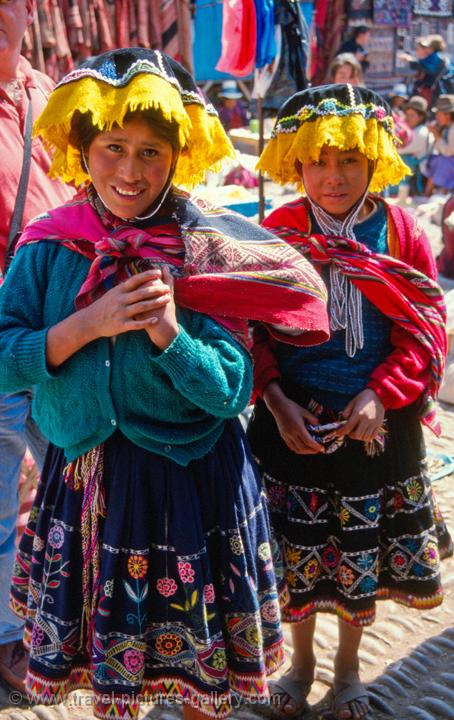
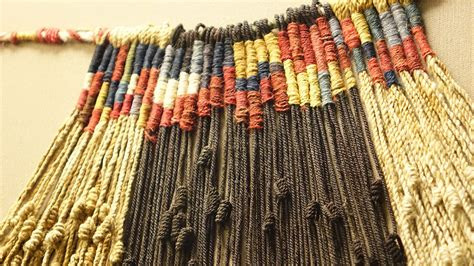
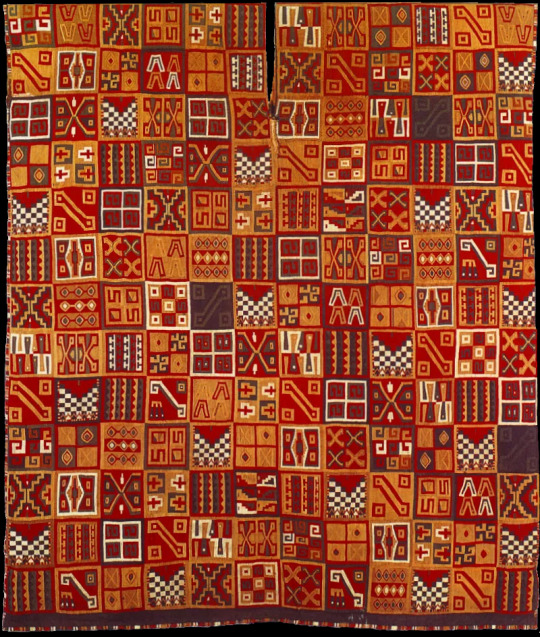
Alternatively I would want a Eastern European winter type of setting because I think these geometric and floral patterns are just so pretty and half of my family is Polish I don't know nearly enough about that mythology as I want to.
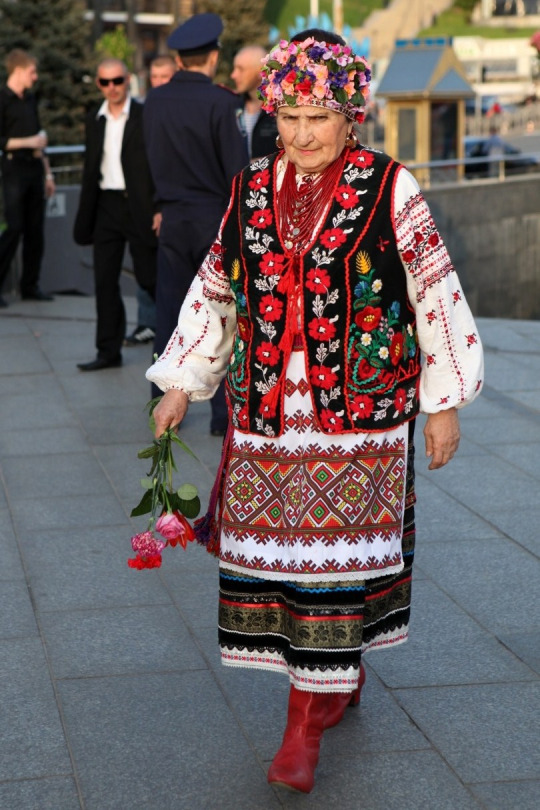

Anyhow, the plot goes as follows: In this little village is an old grandmother named Lohe who was a master of her craft, but has been losing her sight to old age. Her granddaughter, Janome, trained as her apprentice and the two of them work side by side, younger aiding the elder to cope with her blindness, and the elder guiding the younger's unpracticed hands. All is well with the world until one day, a sorceress (who may or may not also be a cursed dragon-like monster) steals the sun, trapping it in a bag woven so tightly that no light can leak through. The world is plunged into darkness and cold, and the Queen despairs, instructing every seamstress to get to work making blankets and cloaks to keep people warm.
Janome and Lohe decide they need to fix the problem because they can see their fellow weavers burning themselves out trying to save everyone else, and so they crochet shawls of feathers to fly into the sky, knit mittens that will let them hold the sun without burning, and sew skirts with tactile star maps embroidered into the fabric, so they can still read the skies when the wax of their candles is gone.
[they do the adventure]
[they save the day]
[hurrah]
The plot is still coming together, but I have some other mythological things I might want to feature. The Crane Wife story involves a crane sacrificing her feathers to sew into garments, so they are going to meet a crane woman at some point who helps them out. Maybe also a Selkie because of the sealskin thing. Spiders of course. Birds who weave nests. Storks are different from cranes but they're the bird on my favorite pair of embroidery scissors. There's a goddess named Trama that they need to help/ask for help, I haven't decided yet.
Just vibes.
Thanks for asking!
#storyweavers#fun fact about the names#janome is the name of a sewing machine manufacturer#Lohe is a misspelling of Lou who was the woman who taught me how to sew when I was 8#god rest her soul she was such a persnickety old woman and I loved her to death#Trama is italian for “the plot” or literally “the weave”#in dnd “the weave” is what they call the magical field that holds the universe together#I might put CODING in this somehow with the way weaving patterns were the first computer binary#the first memory cores that got humanity to the moon are called Little Old Lady memory because they had to be sewn BY HAND#anyhow#hyperfixation go brrr
3 notes
·
View notes